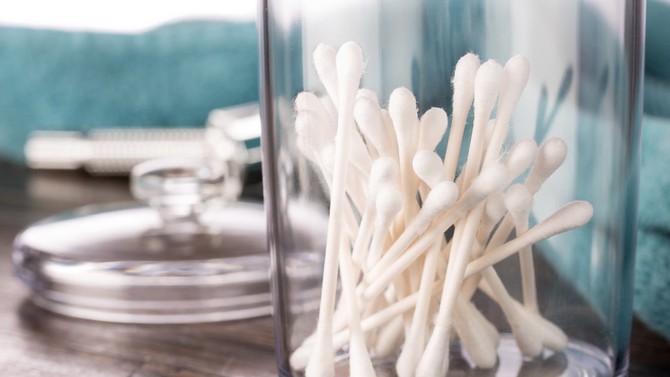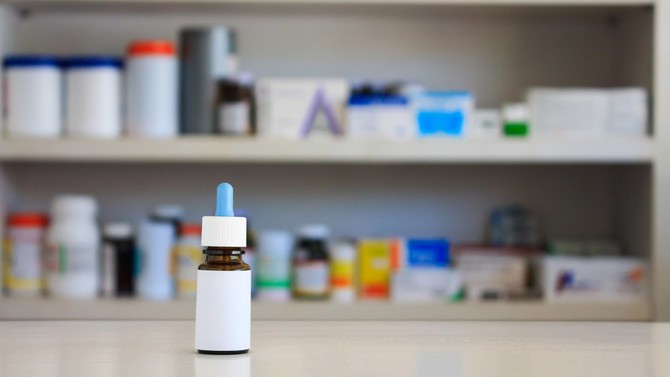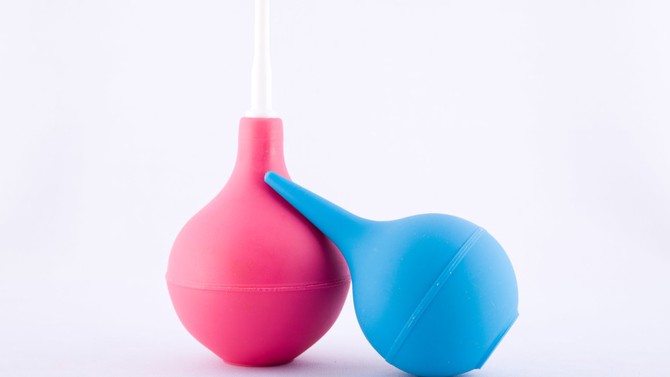6 Things Experts Know About Getting Rid of Earwax
Here's how doctors do and don't clean their ears. Plus, when to just leave earwax alone.
By Jessica Migala

Photo: HaywardGaude/istock
It's hard to resist cotton swabs
Even though you've heard a thousand times that you shouldn't stick anything smaller than your elbow in your ear, you may be doing it anyway. "We have such a strong sentiment in our culture that ears have to be clean that people take dangerous measures," says Melynda Barnes, MD, an ear, nose and throat (ENT) surgeon with ENT and Allergy Associates in New York City. There's also the satisfying clean-ear feeling that can be a factor. She's seen people stick safety pins, car keys and acrylic nails in their ears, and the results are not pretty. It's possible to scratch the skin of the ear canal and introduce bacteria, causing infection. You can also push wax further down, leading to temporary hearing loss. And, worst-case scenario, "we see eardrum ruptures, bleeding from the ear canal—I've even seen the head of a cotton swab stuck in the ear," she says. Although one small found that 97 percent of cotton-swab-induced ruptures within the study sample healed on their own within two months, a rupture can be painful and make hearing difficult—you don't want this to happen to you. Trust us.

Photo: visualspace/istcok
Ears are pretty low-maintenance
It may look like gunk, but earwax (aka cerumen) helps decrease infections in the ear and keeps the skin in the ear canal clean, says Barnes. "As wax is naturally pushed out, it takes anything trapped in the ear canal, like dirt and dust, with it." So, guess what? Unless you're potentially suffering from a wax blockage (possible clues: you can't hear as well as usual or it sounds like you're underwater), you don't need to clean inside your ears. Simply use a washcloth when you're in the shower to wipe off any excess wax from the bowl of your ears, and you're good to go.

Photo: Kwangmoozaa/istock
Drops can work
When your ears feel full of waxy buildup and sounds are muffled, there is a safe at-home remedy that may clear the blockage. "Over-the-counter wax-softening drops or saline solutions are generally good at removing the wax. Studies looking at the two types of drops show that both can be quite effective,” says Seth Schwartz, MD, medical director of the Listen for Life Center at Virginia Mason Hospital in Seattle. (One example of over-the-counter ear drops are carbamide peroxide products.) For a DIY home remedy, you can also use one to two drops of mineral oil in the ear every night for one to two weeks, says Barnes. If symptoms don't improve, make an appointment with your doctor. They'll want to rule out other causes of "fullness," like an ear infection or actual hearing loss.

Photo: Nikolay Titov/Getty
Stay away from candles
As far as alternative remedies go, ear candling is asking for trouble. (Consider that it's also been thought of as a fix for "strengthening the brain.") The technique involves lighting one end of a hollow candle to create suction to remove wax. "Studies show this does not work at all," [https://www.entnet.org/content/earwax-and-care]says Schwartz, who also headed up a group that published updated earwax removal guidelines warning against candling. Any "wax" that people see drawn out from that method was found to not be earwax, but paraffin from the candle. Womp, womp. Plus, there have been reports of severe facial burns, he says. If a blockage is truly bad and you can't take care of it at home, your doctor may clean out the earwax by water irrigation (read on for more on DIYing that) or by scooping the wax out manually.

Photo: Ronyhamud/istock
There's a right way to use water
Some people use waterpiks in their ears (yes, the devices that are used to clean teeth), but these high-pressure systems can cause ear trauma, says Schwartz. Irrigation products designed for ears, on the other hand, are generally safe, he says. Look for those with low pressure that have a safety tip on the end. Another option is filling a bulb syringe with warm water and flushing out the ears. One 2011 study found that using wax-softening drops followed by at-home irrigation could potentially save patients a visit to the doctor's office. The only issue is that it is possible for water to get trapped between the ear wax that's become impacted and the eardrum, leading to an infection, says Barnes. If you try to flush, but still suffer from wax that doesn't budge, see your doctor to remove the blockage.

Photo: FredFroese/istock
Specialty gadgets aren't really worth it
As there's a chance of harming your ears anytime you stick any object into them, the same caution goes for electric ear vacuum kits, says Barnes. The tool is a small vacuum that gently suctions wax out and is available OTC. They wouldn't be among Barnes' top choices for ear cleaning, though, since she finds other methods (such as mineral oil) to be more effective. In fact, one small study found that the at-home vacuum kits didn’t remove earwax at all. If other ways to remove the blockage have failed, she recommends getting evaluated by a doctor.
Want more stories like this delivered to your inbox? Sign up for the Oprah.com Healthy Body Newsletter!
Published 05/09/2017

